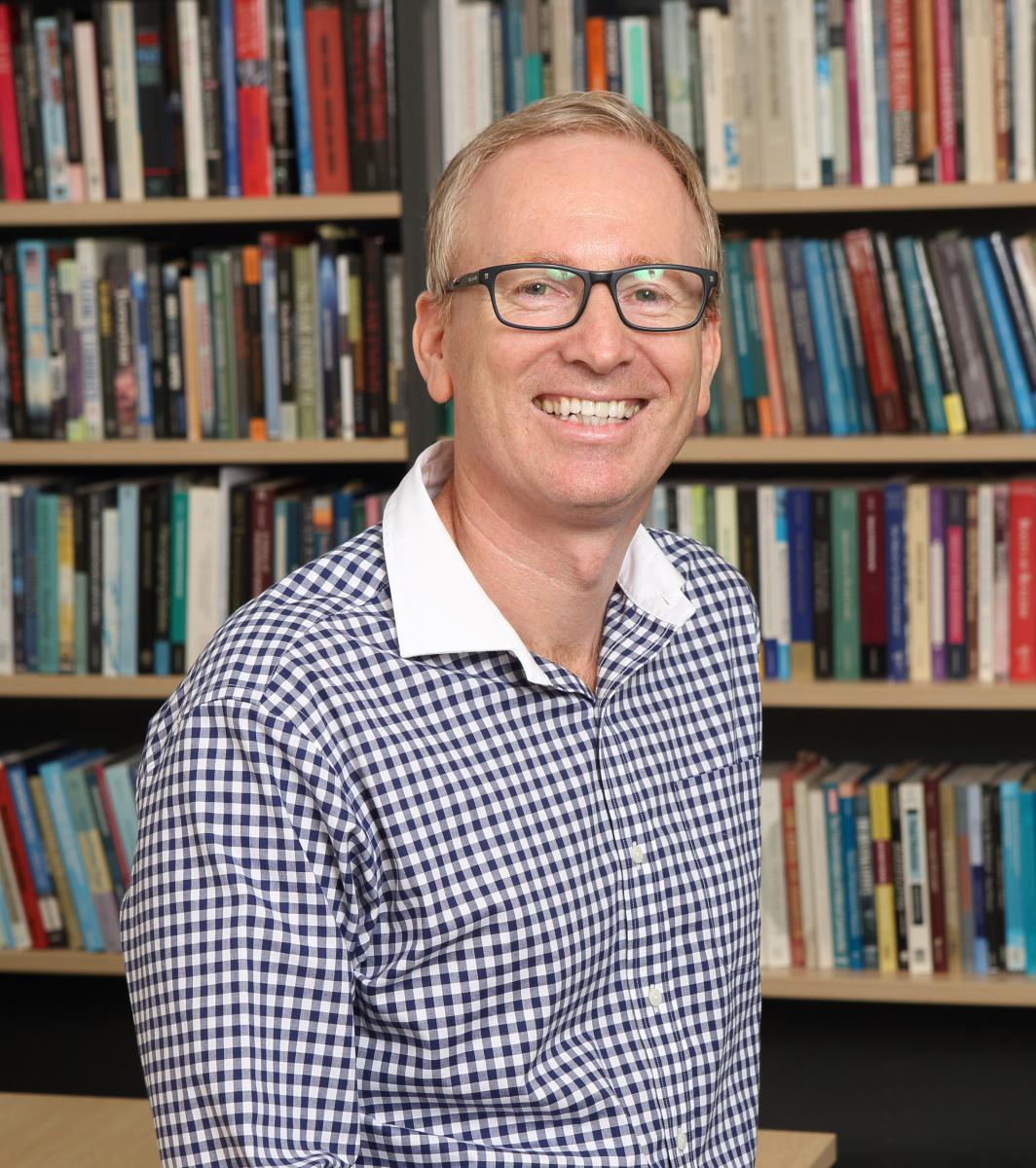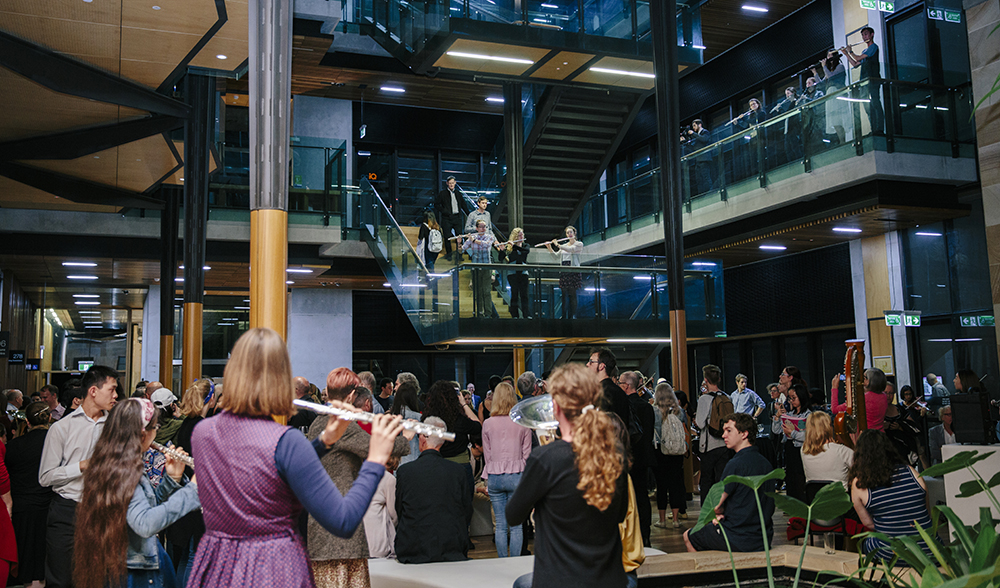Tim's Farewell
 The first Dean of HASS. I write these words with pride and a twist of irony. Pride because, for almost four years now, I have been reminded every day of the quality and commitment of our staff and students. Irony because Fred D’Agostino and I often joke about him being the last Dean of Arts at UQ. First, last, whatever the order, ‘FRED’ has been a constant source of wise counsel since I moved into the Dean’s office in 2014.
The first Dean of HASS. I write these words with pride and a twist of irony. Pride because, for almost four years now, I have been reminded every day of the quality and commitment of our staff and students. Irony because Fred D’Agostino and I often joke about him being the last Dean of Arts at UQ. First, last, whatever the order, ‘FRED’ has been a constant source of wise counsel since I moved into the Dean’s office in 2014.
In the last week or so I have had occasion to return to the expectations that were set for HASS as UQ put in place the 2014 Faculty Review. One requirement of the new Faculty was to ‘take full ownership’ of the BA which had previously been managed by Arts and SBS. We should not underestimate how much effort is required to manage the BA – and I have greatly appreciated the work of professional and academic staff in the Faculty and Schools who have worked tirelessly to support students on UQ’s biggest degree program. Better still, the re-set of the BA is well underway!
A second requirement, according to the Review, was to deal with the problem of duplication and competition between the former School of Journalism and Communication in SBS and the former School of EMSAH (in writing this acronym I’m also pleased that I led a review of the naming of Schools in HASS so that clunky acronyms made way for something more legible). The 2016 School Review of Communication and Arts shows that the new combined School had gone further in solving previous problems than anyone drafting the 2014 Faculty Review documents could have imagined.
I distinctly remember standing in line in a Darwin’s queue a year or so ago and in front of me were four colleagues from the communications grouping – the buzz was audible. I asked Jane Johnston what all the excitement was about and she told me they were in the middle of a long planning session aimed at improving the suite of comms programs. When you see that degree of excitement and commitment about program planning, it is no surprise to learn that the B.Comm and M.Comm generated $4.9m of international fee income in 2017.
The 2014 Review signaled the incorporation of ISSR into HASS. When I say ‘into’ I do it with some hesitation. ISSR is not a Faculty Centre in the conventional sense; it is organizationally autonomous and geographically separate. Yet both Mark Western and I believe that the federation between HASS and ISSR has been mutually enriching (a view that is shared by the Vice-Chancellor and Provost). I have enjoyed my research ‘days’ over at Long Pocket and have learned a great deal about why ISSR has become peerless in the Australian context.
Institutes enable Faculties to build the kind of ‘quality and scale’ (to use the industry language) that is very hard to generate when staffing numbers are built largely around teaching needs. Part of the impetus for IASH was the view, supported by the Vice-Chancellor, that the humanities disciplines needed an Institute to generate dynamic research programs in impactful areas. It is impossible to sum up IASH’s strength and quality in a single sentence; but if I had to do so, I would be noting that it has managed to capture three ARC Future Fellows to the Laureate Fellowship that Peter had already won.
The 2014 Faculty Review also promised two advantages in running the business of the Faculty. And here I would like to add that while I’ve never regarded HASS as a business I have stressed a need to run the Faculty in a business-like way. An essential part of responsible governance in modern universities is balancing the books. I’m pleased to report that we have performed ahead of the budget target in every year of HASS to date, and for the second year running, it looks like HASS will be returning a healthy surplus. Fortunately, changes to UQ’s budget planning cycle mean that we can now invest this surplus strategically. A good example of the upside to this planning process is the open ‘call’ run by the Faculty Research Office to encourage applications to the three strategic schemes that were recently advertised.
The other dimension to being business-like is ensuring we do all we can to invest in the academic purposes. That means developing efficient and creative ways to support teaching and research. I have seen, over four years, many remarkable instances of innovation undertaken by professional teams. The example that immediately springs to mind is the fact that our entire Faculty Research Office took up a secondment opportunity in UQR&I to support the recent Impact and Engagement pilot exercise. To my mind, that is a brilliant example of innovation and collaboration: why have one of us, when we can manage our tasks and workflow such that you get parts of all of our combined expertise and experience?
To go back to the Review, we can certainly claim that HASS delivers a high quality consolidated professional service in marketing, student services, and research advice and support. This is not to suggest that further progress cannot be made – improving service delivery is an on-going process rather than a one-off, just as core academic goals in research and teaching demand continuous improvement.
While it may seem like I’ve been mired in budgets and processes (come to think of it, I have been mired in them!), I would like to think I’ve continued to be an academic staff member doing roughly the same kinds of activity as my colleagues up and down HASS street. Friends and colleagues in my home School of Political Science and International Studies have continued to provide me with a welcoming environment in which I have been able to collaborate in research as well as in the planning of a new taught postgraduate course on ‘humanitarian emergencies’ that I’ll be delivering with Connie Duncombe in the first semester of next year.
If you will permit me the indulgence, I’d like to mention a major collaborative project with my colleagues in the Asia-Pacific Centre for R2P. Alex Bellamy and I compiled an Oxford Handbook of the Responsibility to Protect which had over 50 collaborating authors and ran to more than 1000 pages. And with Chris Reus-Smit we published a co-edited volume The Globalization of International Society which has probably been the most intellectually challenging project I’ve been involved in. Apart from the quality of the book itself, I continue to be mesmerized by Michael Cook’s photograph on the cover (Chris’s inspired choice).
While managing to carry on those aspects that are familiar to me as an academic and researcher, I have also experienced many new things – particularly in the cultural and performance areas. Courting Blakness was a stunning subversion of a sandstone university; From Relics to Rights is a brilliant story of the interplay of anthropology as a discipline and Aboriginal knowledge; the QPAC series of concerts led by the School of Music have been a source of enchantment and inspiration, as was the visit of Kinnane Scholar in Residence Tim Munro and the  incredible performance that he choreographed of Gavin Bryars 'Jesus’ Blood Never Failed Me Yet' in the Global Change Institute earlier this year.
incredible performance that he choreographed of Gavin Bryars 'Jesus’ Blood Never Failed Me Yet' in the Global Change Institute earlier this year.
As I complete this note, surrounded in boxes, a few words on what is going to happen next. Greg Marston informs me that a robot could only undertake 13% of a Dean’s job (I know that is way lower than many of you may think), which means we need a succession plan. Luckily we have a good one. The person moving into the Dean’s office on Monday is Julie Duck. Like me, some of you may remember what an outstanding job Julie did when she was Acting Executive Dean of the former Faculty of SBS in the second half of 2013. A better reason for having complete confidence in Julie flows from the truly outstanding role she has performed as Associate Dean (Academic). And with David Mayocchi as the FEM and Annemaree Carroll as Associate Dean (Research), the Faculty has an experienced and talented leadership team. Meanwhile, a recruitment exercise has begun to appoint my successor, at which point Julie will revert to being the Associate Dean Academic (Karen Moni will be Acting in this role until mid-next year).
I’ve gone on long enough. I think you get the picture. I’m really saying thank you to all my colleagues for their contribution to the Faculty through my years as the Dean. If I had gone on and on, I would have thanked almost everyone in person but I can’t. However, I really ought to thank the marketing team who have assisted me in my communications – forty something newsletters and a fair few re-tweets.
We may not be ‘swimming in rivers of gold’ in HASS, to coin a phrase used by Simon Birmingham, but we have riches that few other faculties of this kind can match.

